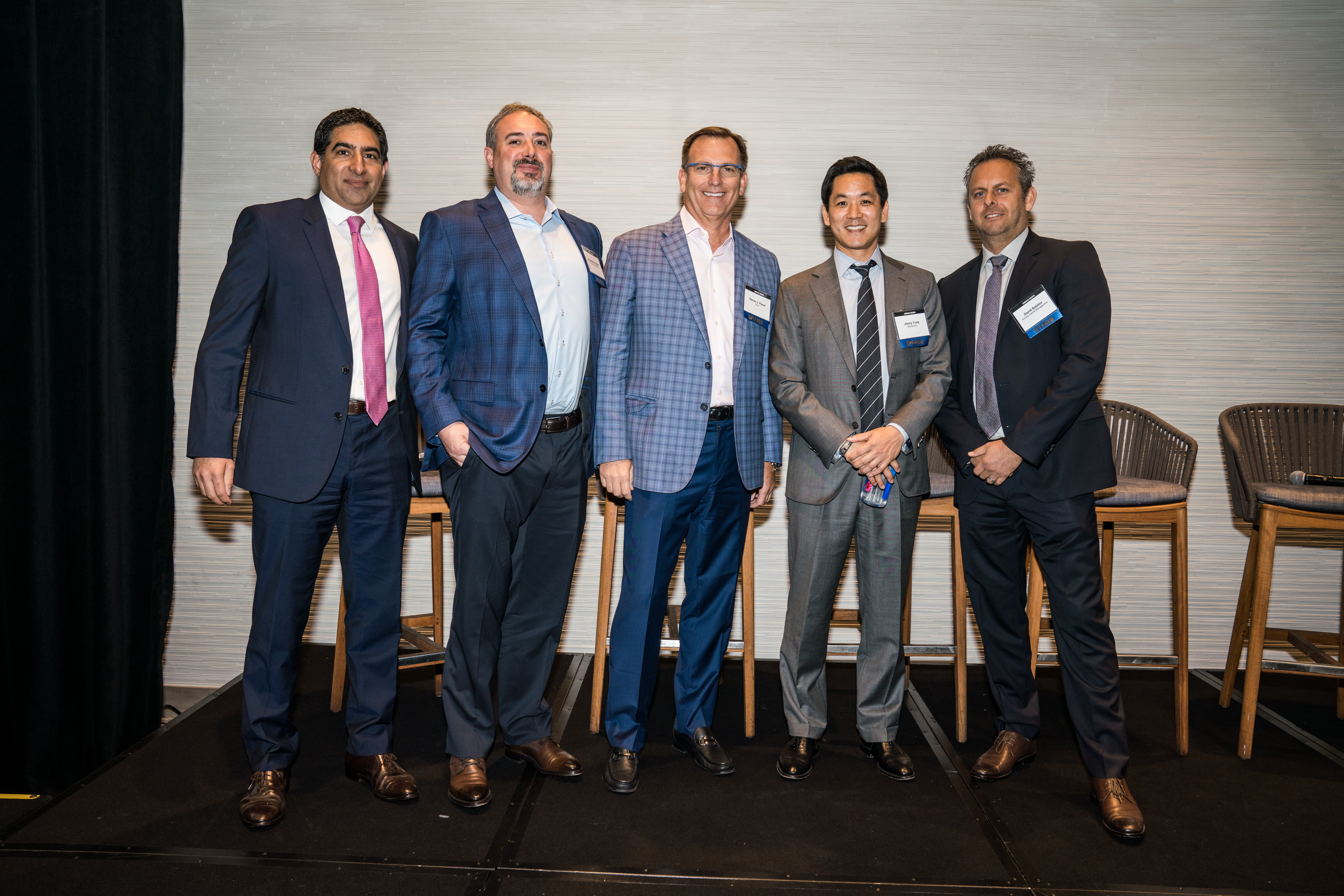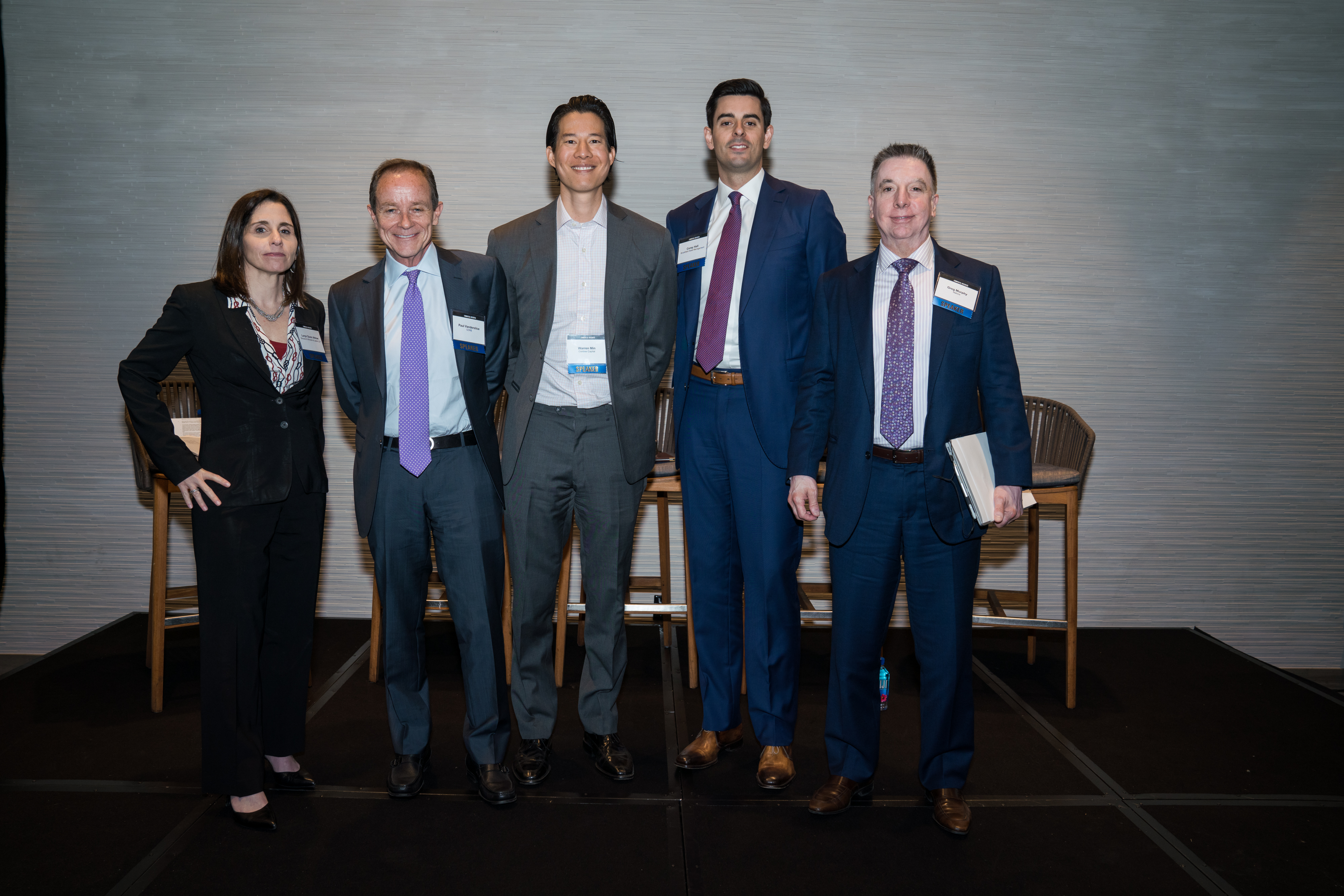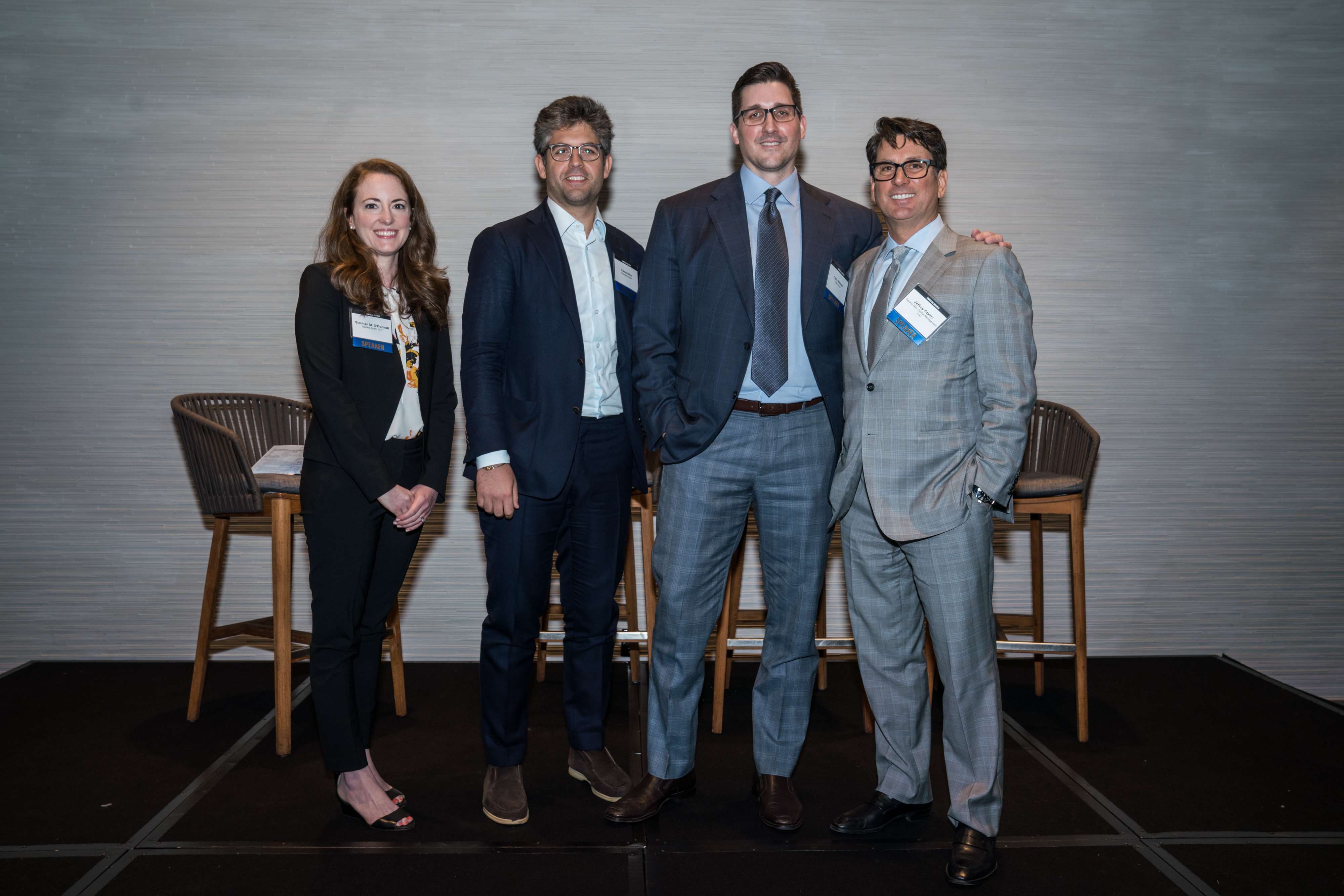What Do You Say, LA?
Notes from Commercial Observer’s Spring Financing CRE Forum
By Cathy Cunningham and Alison Stateman June 5, 2019 10:00 am
reprints
Running on Empty: Slower Job Growth May Spell Trouble for CRE
What goes up must come down, and after a sustained economic recovery from the depths of the 2008-2009 credit default swap crisis and recession that is now more than 10 years out, the question is when and what sectors will suffer when the inevitable downturn comes, as pondered by experts at Commercial Observer’s Spring Financing CRE Forum in Los Angeles last week.
Darrell Wheeler, head of strategy at CCRE, opened CO’s forum by providing an overview of the current landscape, examining the amount of construction and how much has been delivered within different property types.
While he said office development has been active in the last five or six years, most developers in the sector anticipated a recession that occurred from 2016 on and, as such, lenders have only been lending when they have tenants.
Multifamily, which he said has been built to the largest level “we’ve ever seen,” and that hasn’t been much of a problem in the United States because population growth—which he said always grows by 1 percent since the 1940s—has made up the difference.
“If we had to highlight an area that might be a problem, this is the one that’s probably O.K. It’s seen the vacancy rate come down by 2 percent from 8 to 6 [percent] nationally,” he said.
The industrial sector is, unsurprisingly, expected to be in “pretty good shape to start any sort of recession.” Demand for the product was brought home by the Blackstone Group’s record-breaking $18.7 billion purchase of 179 million square feet of U.S. warehouse space from Singapore-based GLP last week.
In terms of rent growth in the hotel and multifamily rental market, Wheeler said it was closely tied to employment growth, which is slowing and may be further hindered if there is a crackdown in immigration.
“The big challenge is you’ve got to have this employment growth continue, and if you start and look at the non-farm payroll every month, it’s hard to add 200,000 jobs every month. When your unemployment rate starts to get below 5 percent, you start to run out of people to employ,” he said, predicting a potential 12 to 24 months of economic growth before a potential slowdown.
His prognosis was seconded by the UCLA Anderson Forecast, which was issued the following day. Economists, drilling down into both national and state-level indicators, such as the most recent GDP data, bond market data and slowing job growth, did not see a rosy future.
Citing a record-level of Californians employed (18.7 million) and low unemployment rate in the state, Jerry Nickelsburg, director of the UCLA Anderson Forecast, wrote that the state “is, quite simply, running out of people to be employed.” He anticipates hiring to slow from its current 1.4 percent rate to 0.8 percent in 2020 and a measly 0.6 percent by 2021.
Considering such factors, the report increased the possibilities of a recession from near zero to 15 percent for the next year ad to between 24 to 83 percent for 2021.—A.S.

Bridge Lenders on the State of the Market
The commercial real estate collateralized loan obligation market is a much-buzzed-about topic, and with good reason. Issuance soared to $14.3 billion in 2018 from $7.7 billion in 2017, which is bound to grab any market observer’s attention. And while its velocity decreased slightly at the beginning of 2019, total volume is expected to remain pretty flat by year end, topping out around $15 billion.
Bridge lending experts at CO’s forum weighed in on what’s driving the market and also—in a time of fierce competition—how CLO issuers are differentiating themselves from the herd.
But first, some history.
It’s hard to have a panel conversation about CLOs without first quelling any fears that they aren’t direct descendants of that dreaded three-letter acronym heavily associated with the global financial crisis: CDO. Simply put, collateralized debt obligations were an arbitrage tool, panelists said, while CLOs are a financing tool.
“ ‘CDO’ was a very generalized term. It spanned a lot of things, and so it was tough to figure out exactly what you owned,” Nik Chillar, head of banking at Crescit Capital, said. As such, three little letters added to the moniker of today’s instruments to help differentiate them from days gone by: “CRE” shows they include commercial real estate loans only and “CLO” emphasizes these are loans, not securities.
Then there’s the retention of 20 to 25 percent of the risk and today’s extensive underwriting of the issuer—critical, seeing as most CRE CLOs are managed pools, the reinvestment period relies on the strength of the issuer to create a good replacement loan for the CLO’s investors.
The criteria for today’s CRE CLO collateral also remains pretty tight, panelists agreed, with both rating agencies and investors putting a very firm box around what can be contributed.
Now that’s cleared up, how are bridge lenders keeping their competitive edge in what moderator Steven Powel, CEO of industry advisory firm Situs, says feels like a “beauty contest to earn business?”
After all, even the industry’s behemoths are feeling the heat of more players in the space.
“It’s a challenge to differentiate yourself,” Jimmy Yung, a managing director at Blackstone, said. “We try to be fast and efficient, and scale is where we have a competitive advantage.” Its breadth of capital allows the platform to play up and down the capital stack, Yung noted. Although Blackstone didn’t issue a CLO in 2018, it issued the biggest one of 2017—BXMT 2017-FL1.
Annaly Capital Management’s David Sotolov joked he’d also tout Annaly’s big balance sheet as the feather in his cap, but peacocking was tough “sitting next to Jimmy.” Still, $100 billion of assets under management ain’t too shabby.
Annaly issued an $857.3 million managed CRE CLO earlier this year (NYL 2019-FL2, through subsidiary Annaly Credit Opportunities Management).
Thorofare Capital has just started tapping the CLO market, using the vehicle as “one tool in our toolbox,” said Brendan Miller, the lender’s chief investment officer.
The bridge lender has built out its platform with the intention of having access to as many levels of the capital stack as possible, Miller said. This includes a move from being a “heavy lift” transitional lender to forming a strategic partnership with DoubleLine Capital in 2015 to do more core-plus lending and up its loan size. The lender focuses on value-add and transitional multifamily, industrial, office, self-storage, student housing, retail, health care and hospitality assets throughout the United States.
“We’ve put together all parts of the capital stack, so we can take borrowers from point A to point B,” Miller said.
Balance sheet lender Crescit operates in the fixed- and floating-rate lending space and also “dabbles in construction as well.” The $10 million to $45 million lending space is its sweet spot and—bonus—there’s a little less competition there.
In times of increased competition, loan pricing can seduce even the savviest of borrowers. Resist the siren song, said the panelists.
Miller said he’s seen borrowers who selected a lender based on attractive pricing subsequently return to them, “usually because that lender didn’t have asset management capabilities or because their loan was contributed to an unmanaged pool,” he said.
Indeed, the potential risk in the unstable nature of heavy-lift, transitional loans means that asset management capabilities are key, and business plans don’t always (or rarely) go exactly as planned. Blackstone has in-house asset management to service what Yung called its “borrower relationship-driven business.”
Thorofare, too, continues to staff up on the asset management side, Miller said, as well as building lasting relationships with its borrowers. New York-based Annaly, on the other hand, is expanding into other markets to be “closer to borrowers in those markets,” Sotolov said.
When Powel asked which industry weaknesses are being witnessed by the panelists, retail still dominated the conversation.
“There’s a real lack of liquidity in the market,” Sotolov said. “Retail owners may not want to sell [their properties] but if they’re trying to refinance the capital markets aren’t that kind, to say the least.”—C.C.

Lenders Talk Foreign Debt and Equity Flows
Despite ongoing trade disputes between the U.S. and some of its largest trade partners, as well as a pullback in Chinese involvement, major foreign investment in the commercial real estate sector hasn’t slowed, panelists said.
Experts on a panel moderated by Loryn Dunn Arkow, a partner at Stroock & Stroock & Lavan, discussed prominent players and what markets, property types and financing were drawing the most suitors.
When polled about whether foreign investment in the U.S. real estate sector would increase, decrease, or stay the same over the next six to nine months, the forecast ranged from “relatively stable” to an expected increase. (The panelists are far from the only ones saying this; according to Real Capital Analytics, cross-border acquisitions of U.S. commercial real estate surged to $94.9 billion last year, increasing 73 percent over the $55.3 billion reported in 2017 and nearly matching the $100 billion recorded in 2015, as reported in National Real Estate Investor.)
“As long as foreign banks keep their rates low and the U.S. isn’t so low, we should see increased capital flow,” Greg Murphy, managing director and head of real estate and hospitality, Americas at Natixis, said.
Paul Vanderslice, CEO of CCRE, concurred, saying foreign investment would increase for several reasons.
“One, foreigners diversify their asset base. Two, given that the dollar is so strong, a lot of their own currencies are actually eroding in value, which is what is bringing more dollars in over here,” he said. “Also, I think relative to other places you could go, I think Europe is weaker with Brexit, which is driving more investment over here.”
Despite the assumption that China was the biggest investor in U.S. real estate, Vanderslice said our neighbors up north are the true OGs. Citing data from Real Capital Analytics, Vanderslice said that in 2018 Canada invested around $19.6 billion compared to China—which was only $5.8 billion.
In Los Angeles, Singapore has become a major player in the L.A. market, which Vanderslice said is “just on fire.” Interest is particularly strong for industrial in Gateway markets like El Segundo, which is in the South Bay of L.A. county.
Despite entreaties and interest rates that are flat, Japan is a nation that is largely sitting out investing in commercial real estate, which Vanderslice said was a byproduct of getting burned in the past.
“They were big, say, from 2002 to 2006, and then certainly when the CMBS market hit the skids in 2008, 2009, prices were 65, 70 cents on the dollar and there were no bids even at that level, so they had a really bad experience,” he said. Japan is one of the biggest players in the CLO sector—accounting for around 40 percent of the market—Vanderslice said, but in terms of the CMBS market, they continue to sit it out.
But Murphy said that the Japanese are investing in other asset classes in the U.S., namely in aviation, energy and renewables and while it remains rare to see them in real estate, he said there has been “a little toe-dipping that’s happening.”
Gateway markets in general continue to be preferred by foreign investors though each country and type of lenders have their own predilections.
“The German banks tend to go toward gateway markets, oddly penalizing San Francisco and Boston in their models,” Murphy said.
Corey Hall, a senior vice president at Brookfield Asset Management, said with so much debt compression he has been seeing a growing diversification into other markets and asset types as foreign investors are chasing yield in order to find deals that make sense.
“Seattle, Portland, Oakland, those are markets where some will play, and some won’t play, and I think you’re seeing less efficiencies in those markets because not everybody is there, but it’s not like a decade ago where it’s like New York, San Francisco or Chicago and that’s it,” Hall said. “I think you’re definitely seeing more people having more experience in the U.S. locales and markets. You’re definitely seeing new markets open up.”
Vanderslice noted that Austin, Texas, has become a major market for foreign investors as the definition of gateway markets expand. In terms of product types, he said multifamily and industrial have been attracting foreign capital, with office and hospitality holding less appeal.
“Multifamily investment by foreigners has gotten big, [accounting for] 30 percent over the last couple of years, definitely industrial,” he said. “From what we’ve seen, multifamily have been bid up by foreign bids and industrial and even though some people have stretched the definition of industrial to include cold storage.”—A.S.

The Ins and Outs of Construction Debt
“The road to success is always under construction,” Lily Tomlin once quipped. And the trio of development experts that were quizzed by Ballard Spahr’s Siobhan O’Donnell have seen quite a few bricks in their time.
The lively panel included some gentle—but seemingly necessary—cautioning.
“Every time the market gets peaky it seems that every borrower is a great borrower and every deal is a great deal,” Chris Allman, a managing director at CIM Group, said, adding that developers should choose their construction lender very carefully. But, “a lot of borrowers aren’t doing that.” And he should know, being both a lender and a borrower (CIM borrows between $5 billion and $7 billion per year).
Casey Klein, a principal of Crescent Heights, is an active borrower who’s busy closing significant debt deals—recent refinances include $734 million in CMBS financing for two of its luxury residential properties in L.A. and San Francisco, namely Ten Thousand and NEMA San Francisco—but said that when it comes to picking a construction lender, the post-close relationship is actually key.
Jeff Fastov, senior managing director at Square Mile Capital Management, concurred, saying that it’s all about “life after you close, and doing the admin stuff as early as possible.” Echoing sentiments from earlier in the conference, Fastov warned against being lured by attractive pricing offered by inexperienced lenders.
“It’s in the nooks and crannies—if a deal isn’t put together well, all the basis points in the world won’t make up for a lender who can’t keep up with the [draw down] schedule,” he said.
Indeed, these tricks ain’t for kids, and borrowers should be wary of those who aren’t necessarily fully versed in the nuances of the complex world construction, Allman said.
“Be careful what you wish for. There are a lot of lenders doing these deals who don’t understand how construction works,” he said. “And when things go wrong and they’re faced with the proposition of assuming that project, they freak out.”
Strengthening its foothold in the debt space, CIM only lends where it builds, Allman said, which gives it a major leg-up in the understanding of those markets. Additionally, having CIM in the capital stack often sweetens the deal for potential borrowers, he said (and Klein agreed).
As for those lenders dabbling in value-add deals that include quasi-construction? Once again, proceed with caution, borrowers.
“Those deals can be even more difficult than ground-up construction,” Allman said, using the example of an 80-year-old building that needs significant rehab as something that needs expert attention.
It’s not just the lenders who are under scrutiny. When asked what makes a good borrower, the panelists also had plenty of boxes to check.
“They should have a strong balance sheet and reputation, a good track record and haven’t given any assets back,” Allman opined. Construction lending is also a relationship business and so Fastov asks himself, “can we add value to their business, and can we do 10 more deals with them?”
But, there is no doubt that “it’s a great time to be a borrower,” Klein said, adding that even when doing big, heavy-lift loans, capital continues to flow to top-tier sponsors with well-located assets.
Indeed, well-located properties decrease leasing risk, which is a key consideration in development lending. Or, more simply put, “We like it when a building fills quickly,” Fastov said.
But, it also comes down to supply and demand. And one interesting market from a case-study perspective is San Francisco.
“The demand there is of the chart, but because of that values are pushed way above trend,” Fastov said.
When the conversation swung around to co-living and co-working properties, panelists agreed that the property use reflects a broader theme: increased importance being placed on a sense of community at properties.
“Mixed-use is a great blend for us,” Fastov said. As an example, Square Mile provided a $30 million preferred equity investment for the construction of Property Markets Group’s X Miami Project—a 462-unit rental tower in Downtown Miami that includes co-working space and The Guild hotel.
As a final word, if things do start to go sideways, speak up, panelists advised the audience. “It’s got to be an immediate conversation [with your lender],” Allman said. Fastov concurred, saying that this sometimes-difficult chat has to come early so there can be a rebalancing.
“Be forthright, and provide real-time info,” Klein said. “In particular, what are you doing to rectify your situation?”—C.C.

In the Tranches: Credit Standards, New Entrants and Opportunities
What does the next year hold for commercial real estate lending? Experts from major institutions taking part in CO’s panel were divided.
When asked by moderator Bill Fishel, a senior managing director and L.A. office co-head at HFF, about changes in credit standards from the same time last year, several said they were holding strong.
“To the credit of those lenders, the underwriting standards have varied greatly from the last cycle, 2005, 2006, 2007, when everything became more elastic,” Seth Grossman, a senior managing director at Meridian Capital Group, said.
“This time around, you’re not seeing a ton of that. You’re still seeing strict underwriting in the fixed-rate business.”
However, where there is some slippage, he said, was through the entry of new smaller sized players in the space where underwriting is being pushed.
Charlie Rose, a managing director at Invesco Real Estate, said he has seen refinancings being done on appraised values.
“Deals are getting done at 70 to 75 percent loan-to-value, but the valuation is inflated so it’s actually 80 percent. Those real LTVs are a concerning trend,” Rose said. “We’ve also seen a movement toward more [covenant]-light type deals, so longer untested terms, and just lighter cash management.”
Alan Flatt, a managing director at Wells Fargo Bank, said instead of what they did in cycles past, his organization and banks in general are staying lower risk and providing their A-notes or warehouse lines to other firms, which has become a big part of his organization’s strategy. By doing so in today’s current lower leverage environment, he said, “that risk is bifurcated, which is probably healthier for everyone.”
“What we’ve done with other cycles, where we did go off the leverage curve, it ended badly for us, so no thanks,” he said.
Another change from past markets, that has “amazed” Flatt is how the current cycle continues to evolve in what he classified as “mini” or “counter” cycles where investors are jumping into perceived higher-risk sectors, like retail.
“I’ve seen some really good retail opportunities lately. We’ve seen some good hotel opportunities lately which is late cycle. We’re making a bridge loan to a fund that has limited service hotels and the fund has three to five years left on the fund life and we went in and provided a loan there,” he said. “There are still good opportunities in the market and it’s been interesting…You can say it’s late in the cycle or there’s a trade war, but still, individually, there are opportunities.”—A.S.


